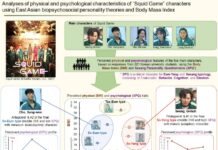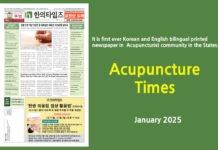
By Winston Lee L.Ac., Ph.D., KMD
Trigger Finger Syndrome is a condition in which one finger gets stuck in a bent position and then straightens with a snap, like a trigger being pulled and released. This condition occurs when inflammation narrows the space within the sheath surrounding the tendon in the affected finger.
Anatomically, the condition involves the flexor tendons, which are responsible for bending the fingers. These tendons pass through a series of pulleys in the fingers. In Trigger Finger Syndrome, the A1 pulley, located at the base of the finger, becomes thickened and inflamed, impeding the smooth gliding motion of the tendon.
The flexor digitorum profundus and flexor digitorum superficialis muscles, which control finger flexion, are directly affected. Repetitive gripping actions, prolonged use, or inflammatory conditions such as rheumatoid arthritis can contribute to the development of Trigger Finger Syndrome. Therefore, it’s one of the most difficult conditions to treat in Western medicine. The symptoms are very pronounced and cause great discomfort to the patient, but doctors can only prescribe painkillers and recommend to the patient not to do too much work or exercise. Treatment often includes rest, splinting, anti-inflammatory medications, steroid injections, and, in severe cases, surgical release of the pulley.
The forearm flexor muscles include the Flexor Carpi Radialis (FCR), which originates from the medial epicondyle of the humerus and inserts at the bases of the 2nd and 3rd metacarpals; the Flexor Carpi Ulnaris (FCU), originating from the medial epicondyle and olecranon, inserting at the pisiform, hamate, and 5th metacarpal; the Flexor Digitorum Superficialis (FDS), originating from the medial epicondyle, coronoid process, and radius, inserting at the middle phalanges; the Flexor Digitorum Profundus (FDP), originating from the ulna and interosseous membrane, inserting at the distal phalanges; the Flexor Pollicis Longus (FPL), originating from the radius and interosseous membrane, inserting at the distal phalanx of the thumb; and the Pronator Teres, originating from the medial epicondyle and coronoid process, inserting at the lateral radius. These muscles enable wrist and finger flexion.
So, when a patient like this comes to the doctor, the doctor can find out which of these six muscles has a problem through a physical examination and treat it. In terms of acupuncture points, it is near PC4, and you need to insert needles at least one inch in depth for an adult male to be effective. The patient may feel a heavy or stinging sensation when receiving this acupuncture treatment and should be informed that this sensation usually lasts until the same day or the next day. Tell the patient that they should expect to see improvement afterward.
Doctors should educate patients on what to do at home. To stretch the forearm flexor muscles, extend the arm straight in front with the palm facing up. Using the opposite hand, gently pull back on the fingers, bending the wrist back until the patient feels a stretch along the underside of the forearm. Hold this position for 15-30 seconds, ensuring the elbow remains straight to maximize the stretch. Repeat this stretch 2-3 times on each arm.
In my experience, it takes as little as one treatment and as long as three or four treatments to see noticeable results. Acupuncture is more meaningful than any other Western treatment because it can be done without surgery or steroid injections, which have many side effects.
































